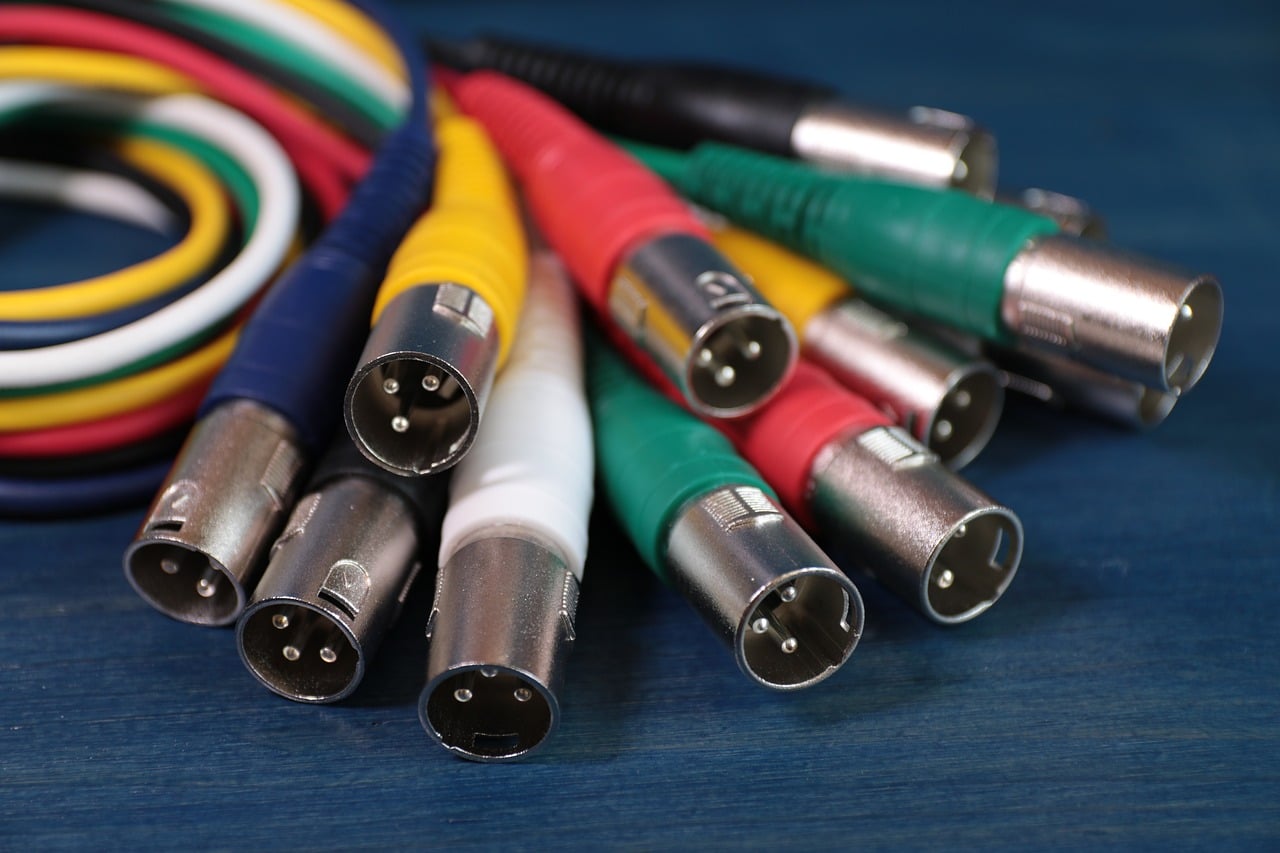In the world of professional audio, the XLR connector is a fundamental component that ensures top-notch sound quality and reliable connectivity. Yet, many people are still mystified by this seemingly complex piece of equipment. In this comprehensive guide, we will dive deep into the world of XLR connectors, their history, and their functionality and provide you with valuable insights into making the best use of these essential audio tools.
The XLR connector was first introduced in the early 1950s by Cannon Electric Company, which later became part of ITT Corporation.
Over the years, the XLR connector has evolved to meet the ever-changing needs of the audio industry. While the original 3-pin design remains the most common, variations with 4, 5, 6, and 7 pins have been developed to accommodate more sophisticated audio systems. Regardless of the number of pins, the XLR connector’s robust design and unmatched reliability have solidified its position as an indispensable component in professional audio setups.
 Dissecting the Components
Dissecting the ComponentsAn XLR connector comprises several key components that work together to deliver high-quality audio transmission. These include:
One of the critical advantages of XLR connectors is their ability to transmit balanced audio signals. Balanced audio minimizes noise and interference by utilizing a pair of signal-carrying wires with opposite polarity. This configuration enables any noise picked up along the cable to be effectively canceled out, ensuring clean and pristine audio transmission.
The XLR connector’s versatility and reliability make it an essential component in various professional audio applications, such as:
XLR connectors are commonly used in professional microphones, providing a reliable connection and balanced audio transmission for crystal-clear sound quality.
Audio interfaces and mixers often feature XLR inputs and outputs to accommodate microphones and other professional audio equipment, ensuring robust and reliable connections.
Active studio monitors and PA systems frequently use XLR connectors for balanced audio connections, delivering clean and accurate sound reproduction with minimal noise and interference.
To ensure optimal performance and longevity, follow these best practices when working with XLR connectors:
Avoid excessive bending or twisting of the cables, as this can cause damage to the internal wiring and compromise audio quality. Coil cables neatly and avoid tight loops that could cause kinks when storing cables.
Inspect XLR cables and connectors periodically for signs of wear or damage. Clean the connectors with a soft cloth and isopropyl alcohol to remove dirt and debris that may affect the connection quality.
Ensure that XLR connectors are firmly plugged in, and the latch mechanism is engaged to prevent accidental disconnections during performances or recording sessions.
Invest in high-quality XLR cables and connectors from reputable manufacturers to ensure optimal signal transmission and long-lasting performance.
Although XLR connectors are designed for durability and reliability, they occasionally encounter issues. Here are some common problems and their solutions:
If you experience intermittent sound or signal dropouts, inspect the XLR connector and cable for any visible signs of damage. Replace the cable or connector with a new, high-quality one if necessary.
A hum or buzzing noise may indicate a ground loop or interference issue. Try using a different power source or repositioning the cables to minimize interference. If the problem persists, consider using a ground loop isolator or an audio transformer to resolve the issue.
Distorted or noisy audio can result from a damaged or poor-quality cable, interference from nearby electronic devices, or a malfunctioning piece of equipment. Replace the cable with a high-quality one and ensure your equipment is properly working. Also, minimize the proximity of potential sources of interference.
XLR connectors are an indispensable component in the world of professional audio, offering unparalleled reliability and performance for a wide range of applications. By understanding the history, anatomy, and best practices associated with XLR connectors, you can unlock their full potential and ensure top-notch audio quality in your own setup. With proper care and maintenance, XLR connectors will continue delivering pristine, balanced audio for years.